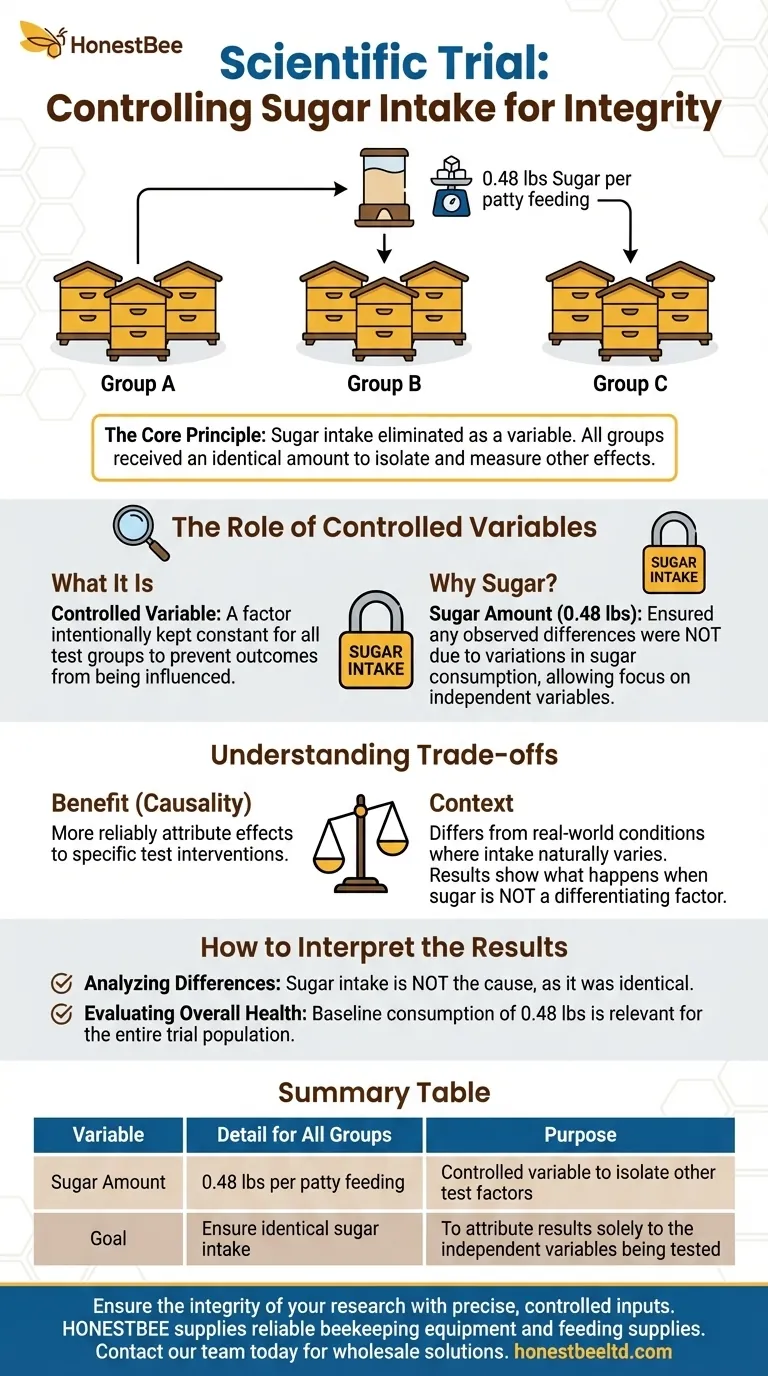In this trial, each group received an identical amount of sugar to ensure a controlled experiment. The specific quantity was approximately 0.48 pounds of sugar per patty feeding for every group involved.
The core principle of this study's design was to eliminate sugar intake as a variable between the groups. By providing a matching amount of 0.48 lbs of sugar to each, researchers could accurately isolate and measure the effects of the other factors being tested.

The Role of Controlled Variables in Research
To understand the results of any scientific trial, we must first understand its methodology. A key part of this is controlling variables.
What Is a Controlled Variable?
A controlled variable is a factor that is intentionally kept constant throughout an experiment for all test groups.
This practice is essential to prevent these factors from influencing the outcome.
Why Sugar Was the Control
In this specific trial, the amount of sugar provided to each group was a critical control.
By ensuring every group received exactly the same amount—0.48 lbs per feeding—researchers could be confident that any observed differences between the groups were not due to variations in sugar consumption.
This allows the focus to remain squarely on the variables that were intentionally changed, known as the independent variables.
Understanding the Trade-offs of This Approach
Controlling variables is standard practice, but it's important to recognize the context it creates.
Isolating the True Cause
The primary benefit is causality. By holding sugar constant, any resulting effects can be more reliably attributed to the specific interventions being tested on each group.
Without this control, you could never be sure if a change was caused by the test factor or simply by one group consuming more sugar than another.
A Note on Real-World Application
The controlled nature of a study can sometimes differ from real-world conditions, where factors like sugar intake might naturally vary.
Therefore, the findings are most powerful when understood within the context of the experiment's design. The results tell us what happens when sugar intake is not a differentiating factor.
How to Interpret the Results
With this in mind, you can now evaluate the study's findings with greater clarity.
- If you are analyzing differences between groups: Remember that sugar intake is not the cause of these differences, as it was identical for all.
- If you are evaluating the overall health of all groups: The baseline sugar consumption of 0.48 lbs per patty feeding is a relevant factor to consider for the entire trial population.
Ultimately, the decision to hold the sugar amount constant was a deliberate choice to ensure the scientific integrity of the results.
Summary Table:
| Variable | Detail for All Groups | Purpose |
|---|---|---|
| Sugar Amount | 0.48 lbs per patty feeding | Controlled variable to isolate other test factors |
| Goal | Ensure identical sugar intake | To attribute results solely to the independent variables being tested |
Ensure the integrity of your research with precise, controlled inputs. For commercial apiaries and distributors, consistent, high-quality supplies are as crucial as controlled variables are to a successful experiment. HONESTBEE supplies the reliable beekeeping equipment and feeding supplies you need to maintain your own operational standards. Contact our team today to discuss wholesale solutions for your apiary.
Visual Guide

Related Products
- HONESTBEE Professional Hive Top Bee Feeder Feeding Solution
- HONESTBEE Entrance Bee Feeder Professional Hive Nutrition Solution for Beekeeping
- Professional Hive Front Entrance Bee Feeder
- Professional Hive Top Bee Feeder for Beekeeping
- Boardman Entrance Bee Feeder Durable Galvanized Steel and Wood Construction for Beekeeping
People Also Ask
- What are the advantages of hive top feeders? Maximize Feeding Efficiency for Your Apiary
- What should be done with feeders and equipment after feeding bees? Essential Steps for Apiary Health
- What is a top feeder for bees? Maximize Colony Health with Efficient Feeding
- Why is a top feeder essential for bees? Ensure Colony Health and Efficiency
- What safety features are included in top feeders? A Guide to Drowning Prevention and Hive Safety



















